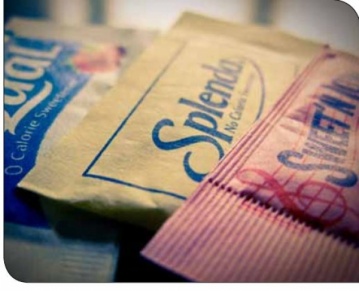
Dear Earth Talk:
I saw an article on sugar’s effects on the environment. Has anyone compared different sweeteners (artificial or natural) for their environmental impacts?
-- Terri Oelrich, via e-mail
The production of sweeter than table sugar has indeed sugar but without taken a huge environmental toll. ural alternatives calories. Other nat- “Sugar has arguably had as include coconut great an impact on the environment as any other agricul- malt syrup, brown palm sugar, barley tural commodity,” reports the rice syrup, agave
World Wildlife Fund (WWF), nectar, maple syrup citing biodiversity loss as a and raw honey. result of the “wholesale conversion of habitat on tropical not save on calories These choices may islands and on coastal areas” like stevia, but they to grow sugar. WWF adds that do sweeten without the cultivation of sugar has environmental also resulted in considerable guilt. As for synthetic and the use of large amounts of chemicals across the tropics and beyond. Some natural food markets now carry sustainably harvested sugar that does not fit this profile, though sugar’s ugly history has led many eco-conscious consumers to look elsewhere to satiate their sweet teeth. Fortunately there are several natural and artificial options that are safe to eat and relatively benign for the environment. Perhaps the most popular choice is stevia, a sustainably harvested herb from Latin America that is 30 times soil erosion and degradation sugar alternatives, there has been considerable talk of how dangerous they may be for our dence of harm has health, but little evi- actually come forth and their environmental impacts son for concern. may be more rea- Aspartame, for example, used in Equal and also in diet sodas, is made and soy, the two by fermenting corn biggest genetically engineered crops in the U.S. Environmentalists are con- cerned that such tinkering with nature could have unexpected and potentially disas- trous results down the road. Another common sugar alternative, sucralose (trade name Splenda) has its issues, too. A study released in 2013 by researchers from the University of North Carolina (UNC) found that the majority of Splenda used around Stream, the fast-moving ocean current that starts in the Gulf of Mexico and flows into the Atlantic Ocean and beyond into the coastal waters of Europe and Africa.
Changing perceptions about just how much healthier organic foods are than non-organic foods growth of the are impacting the sector. But even if the personal health benefits of eating organic aren’t significant or clear, the environmental advantages of organic agriculture still make the practice well worth supporting.
“Sucralose cannot be effectively broken down by the bacteria in the human digestive tract,” reports UNC. “As a result, the body absorbs little or no calories and 90 percent of the chemical compound leaves the body through human waste and enters sewage systems.” Since this sucralose cannot be broken down by most water treatment systems, it ends up the world ends up in the Gulf in the oceans, where the longterm effects remain unknown. Saccharin (trade name Sweet’N Low) got a bad rap in the 1970s when rats exposed to large amounts got bladder cancer, but it has since been vin- dicated: The Food & Drug Administration removed warning labels in 2000 and the Environmental Protection Agency removed it from its lists of hazardous constituents and commercial chemical products in 2010. Nonetheless, saccharin can cause problems for pregnant women and infants who consume large amounts, and also gets a veto as a petroleum derivative.
